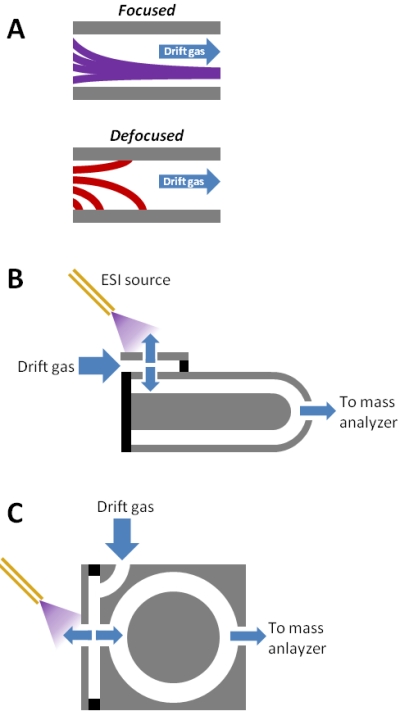Figure 1. Cylindrical FAIMS.

(A) Simulation of focusing and defocusing in a cylindrical FAIMS device like the one shown in (B). Ion trajectories are shown for the same ion originating at different radial distances from the center electrode. Ions will be focused or defocused depending on their properties and the instrumental parameters. If type C ions (e.g., peptides) are focused, type A ions will be defocused. The type C ions will defocus if the polarity of the FAIMS waveform is reversed. (B) Side cutaway view of the device from [36-40]. The electrodes are concentric cylinders that terminate in domes. Ions travel the length of the electrodes and encounter an additional focusing region in the domes. (C) Side cutaway view of the device from [43,45,46,49-54]. Ions travel the radius of the cylindrical electrodes rather than lengthwise as in (B).
(A) adapted from [18] , ©2010, with permission from Elsevier. (B) adapted with permission from [36], © 2000 American Chemical Society.
